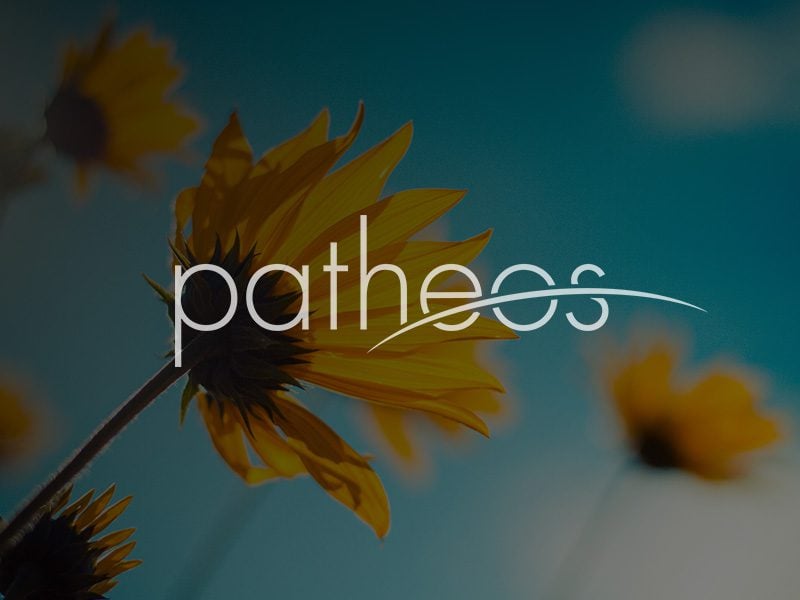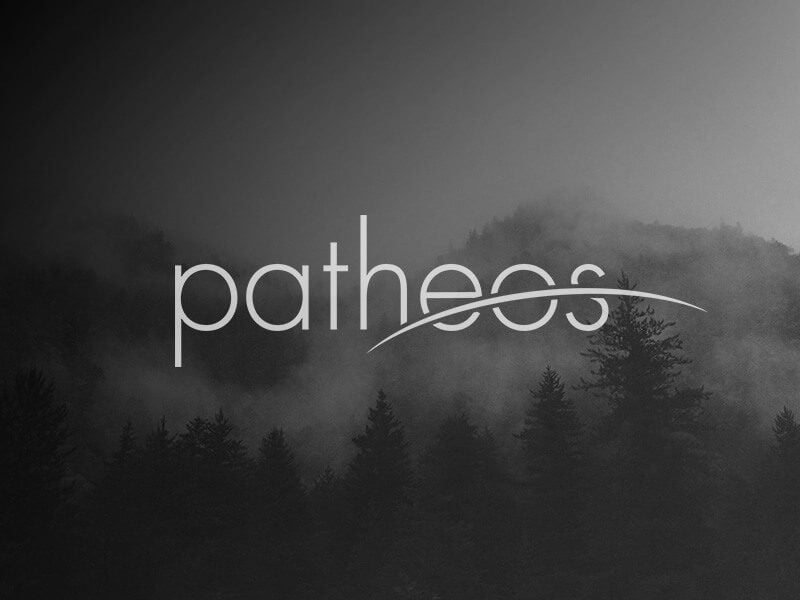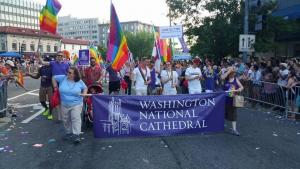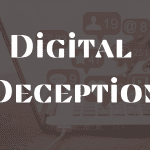This
is an empirical study I did on values and religiosity in America.
After finishing it I discovered how important my findings were to Democrats in general and I felt compelled to share them with the Democratic
Community at large.
Religiosity and Political Party Cleavages: An Analysis of the "God Gap" in America and Western Europe
by Steven Yeadon
The relationship between religion
and politics is becoming more important in the US in the wake of the so called
“values voter” phenomenon in the 2004 election and the use of blatantly
religious dialogue by both the Republican and increasingly the Democratic
Parties. However, the two parties are often portrayed as beholden to diametrically
opposed religious interest groups, “Secular progressives” in the case of
Democrats or the “Religious Right” in the case of Republicans. These two camps
are portrayed as in a “Cultures War,” but is this a realistic assessment of
both parties? Clearly there are conflicting values priorities between the two
parties given the fact that there are cleavages between the two sides
concerning social welfare and social/cultural issues that cannot be explained
using the materialist/post materialist model (Carmines and Layman). This then
leaves open the question of what is causing this fundamental difference of
priorities and perspective? One Answer to this quandary is that the caricatures
and stereotypes of the two parties are fairly accurate and that Republicans are
simply more religious than Democrats and there is a genuine “God Gap” in America. This cleavage would then
be between religiously orthodox Republicans and religiously liberal Democrats (Layman
and Carmines). However, there is another side to the issue which argues that inter
denominational divisions within the country are degrading and showing great
signs of convergence on political issues and in both parties there is increased
discussion about religion. As well as a trend towards intra religious division
based on moral views and social issues (Kohut). However, if the so called “God
Gap” does not exist or is over stated then that leaves the true values cleavage
between the parties unknown.
Method and Hypotheses
This paper attempts to answer the questions
of whether the Democratic and Republican Parties are divided by religiosity, and
if this is not the case what are their true values cleavages present in the
American electorate. It also seeks to determine whether parties of the left are
less religious than parties of the right. To do this, the 1999-2002 World
Values Survey/European Values Survey administered by World Values Survey Association
will be analyzed. These surveys ask a battery of questions concerning both
religiosity and values dimensions and its dataset will form the basis of the
research presented in this paper.
To guide the research of this paper,
two hypotheses have been made. First, that the religious cleavages between Democrats
and Republicans are overstated and that a significant correlation between
religiosity and political party does not exist in the United States. Furthermore, that most
parties of the left and right in other nations are not clearly divided by
religion. The second hypothesis is that it is values variables other than
religiosity that is fueling the values divide in American politics. Thus, it is
perspectives on morality and tradition that is truly fueling the divide in
American politics.
Party identification will be measured
using a measure of party preference within the survey. However, this question
includes independent leaners, individuals that self identify as independents
but prefer one party over another, as a support group for their preferred
political party. The decision to include Independent leaners in the party
preference category was arrived at considering the increased Partisan
Polarization in the American Electorate (Brewer). A case could be made that many
independent leaners are closet partisan since they exhibit even higher rates of
partisanship than weak partisans on a seven point scale of party identification
(Kamieniecki 365).
The variables that will be used in
this research to determine religiosity are how important an individual considers
God in their life, how often an individual prays outside of religious services,
and how often an individual attends church services. The variable “How
important is God in your life?” was chosen since it showed a self assessment of
how important an individual’s thinks the connection with the “sacred” aspect of
their life was. In addition, this variables was split into two response categories,
those who replied that God was very important or important in their life have
been deemed “religious” while those who said that God was unimportant or not at
all important to their lives have been deemed “secular.” Secondly, the prayer
variable indicates how often a person thinks about their spirituality and takes
the time to act on it personally despite the busyness of daily life. Ideally a
religious response would be categorized as daily prayer or prayer several times
a week but the Survey only provides for a category of daily or weekly prayer with
no middle ground. It is the aim of this paper to avoid over inflating the “religious”
category with people who go to church or Synagogue on holy days of the week but
hardly think about their faith in between services. This paper is also working
off an assumption that people who pray several times a week will likely
categorize themselves as daily prayers while those that pray a few times a
month will likely categorize themselves as weekly prayers which means each
response variable could be inflated by individuals with a lower religiosity
than is really reported. Thus for this variable the “prays daily” response will
be the only “religious” response. Lastly, the church attendance variable will
show how important being part of a community of like minded people of faith is
to that individual. In a way this shows their resolve to put legs to their faith
and act on it even if it is such a basic act as attending church services. A “religious”
response for this variable will be weekly or monthly church attendance while
lower rates of attendance will form a more “secular” response.
To show that religion isn’t divisive
in other developed countries, data concerning the countries of the United Kingdom, France, and Germany will be utilized. In these
countries the three religiosity variables just mentioned will be used to
measure the correlation between political party and religiosity in those
nations.
In addition to the variables which
deal with the private personal religious sphere, how individuals relate their
faith to the more public sphere will also be measured. The variables included
to measure this aspect of religiosity are how much confidence an individual
shows in the church and whether an individual believes that it is better if
other people have a strong religious faith. The Church Confidence variable will
show whether an individual believes that churches, and by extension their leadership,
can be relied upon as religiously important institutions that are beneficial to
society. The variable concerning whether strong religious faith is a good
quality in other people is intended to show whether a person believes that
their faith is beneficial for other people as well as themselves, which should
result in evangelism of some sort. This paper will also measure whether there
is a difference between the two parties concerning an individual’s belief that
religious leaders should have a direct influence on government. This is to see how
many people in both parties believes that their faith’s morality and ethics is
needed to be directly applied to all people through government, even to those
that are nonbelievers.
This paper also tested for variables
that had more to do with moral perspective and traditional values than
religiosity. The two variables that will be used to compare any differences in
these values perspectives between the two parties will be whether an individual
believes there are clear guidelines of good and evil or if good and evil are
defined by situation along with a measurement of how many people in both
parties hold traditional versus secular values. The variable concerning good
and evil highlights the classic dichotomy in moral doctrines: the conflict
between good and evil. Those individuals that hold that this dichotomy is
governed by absolute, unchanging standards are in essence moral absolutists.
Alternatively, those that believe this dichotomy is governed by rules that
change according to situation are using situational ethics, a form of moral
relativism. The traditional versus secular values variable was included to see how
many people in both parties have extremely secular or extremely traditional
values which may be resulting in a values cleavage. Democrats are often
portrayed as a secular, progressive party as opposed to the Republicans who are
normally portrayed as theistic traditionalists. Whether this stands up to
scrutiny will show whether the parties are fundamentally divided on the issue
of secular versus traditional values. The traditional variable itself
emphasizes the following responses: God is very important in the respondent’s
life, abortion is never justified, respondent has a strong sense of national
pride, respondent favors more respect for authority, and it is important for a
child to learn obedience and religious faith rather than independence and
determination. As for secular values, they emphasize the opposite positions (Inglehart
118).
Also, after analyzing the initial
findings an additional variable affiliated with values and religiosity was
added. This variable is whether an individual believes in the concept of hell.
Hell is an incredibly difficult concept that paints non believers as eternally
damned. Anyone who believes in this concept would, logically, tend to have a
more conversion oriented faith, which implies a faith that reaches into the
public as well as private spheres. Otherwise that person is either not thinking
about what their belief really means to other people or they could be just cold
hearted.
Data Analysis
The initial correlations concerning
religiosity in the supporters of the Democratic and Republican Parties found
that the hypothesis stating there would be no statistically significant
difference between the two parries in terms of religiosity was incorrect.
Tables 1 and 2 shows that on average Democrats are slightly less likely to be
religious than Republicans when it comes to the variables of importance of God
in life and daily prayer. However, the degree to which Democrats and
Republicans differ on these variables shows that this difference is only small
to negligible in size and strength. Table 3 shows that Democrats and Republicans
are clearly divided by church attendance with Democrats being less likely to go
church than Republicans, but the strength of this correlation is still fairly
weak. Far more interesting was the result of separating the parties into ethnic
groups. (Asians were excluded since they made up such a small number of survey
respondents). Blacks and Hispanics in the Democratic Party have roughly
equivalent levels of religiosity compared to the Republican Party as a whole. The
lowest rates of religiosity among the groups were consistently shown by black
and Hispanic Republicans and white Democrats. Considering that whites make up a
majority in the Democratic party and Hispanics and blacks make up a fairly
small minority of members in the Republican Party it is then easy to see why
the “all respondents” category’s correlations are so weak. White Republicans,
the majority of their party, have fairly high levels of religiosity which
outweighs their slightly more secular ethnic minority members; whereas, Democrats
have a moderately high level of religiosity in their white majority that is
counterbalanced somewhat by their more religious black and Hispanic minorities.
Thus the two parties appear to be closer to one another concerning religiosity
than would be seen if ethnicity was not controlled for.
The case of Europeans was even more
interesting. Counter to the original hypothesis, parties on the left and right
in France and Germany are clearly separated by
religion with a moderately strong correlation between higher levels of
religiosity and preferring a right leaning party. However, Britain showed a weaker correlation,
on average, between religiosity and party preference with the Conservatives
being slightly more religious than the Liberal Democrat and Labour Parties.
The more public sphere oriented
religiosity variables showed that the two parties on average differ only
slightly on the issues of church confidence as can be seen in Table 7. However,
the issue of whether it is a good thing for people to have a strong religious
faith did divide the two parties as can be seen in table 8. It resulted in the
highest correlation between positions in the two parties thus far, although the
correlation was still weak. Although, when controlled for ethnicity, the data
shows that Blacks and Hispanics do have some statistical differences between
parties. Democratic Hispanics and Republican Blacks are more likely to think
that people should not have a strong religious faith, although neither
correlation is statistically significant. Most interesting is that there is a
fairly moderate correlation between whites in the two parties concerning this
variable. Democratic whites are clearly less likely to believe people should
have a strong religious faith than Republicans. To expand on this finding another
correlation was done using belief in the concept of hell between the two
parties in table 10. The correlation for all respondents between the two
parties was the same as the one recorded between the two parties concerning whether
people should have a strong religious belief. However, when controlled for by
ethnicity, this variable showed that Democratic whites had an even stronger
correlation for disbelief in hell compared to white Republicans than they had
for believing other people should not have a strong religious faith. These
findings show that Democrats tend to believe that their faith works just for
them as compared to Republicans who appear to have a more conversion oriented mindset.
In addition, Democrats are more likely to believe that hell does not exist
which may reinforce this belief, since they are more likely to believe there is
no spiritual punishment for disbelief. As for the variable concerning whether
religious leaders should influence the government there was only a slight
difference between the parties. Although, it should be noted that a simple majority
of Democrats believe religious leaders should not influence politics while 40%
of Republicans took the opposite stance, which shows that there is some
polarization, at least at the poles, on this issue.
Lastly, the two values variable
tested for in tables 11 and 12 show that here too the parties were divided.
Democrats were clearly more likely to believe morality was situational than
Republicans, although the strength of this relationship was still weak. Again,
when controlled for by ethnicity white Democrats were shown to have a greater
degree of difference than the Democratic Party average. However, black
Democrats were far more likely to be relativistic when it came to morality than
black Republicans, although the correlation was not significant. Finally, the cross
tabulation for traditional versus secular values showed that there was a clear,
though weak, difference between the two parties. Democrats were slightly more likely
to hold secular values than Republicans, although traditionalists still made up
a solid majority of the Democratic Party. When controlled for by ethnicity, two
interesting findings presented themselves. First, Republican Hispanics fall
into the “very traditional” category far more than any other group surveyed.
Secondly, white Democrats and Republicans were clearly split by this issue. White
Democrats were clearly more likely to have secular values than white Republicans.
In addition, the strength of this correlation is equal to the one between
whites concerning the issue of whether it was good if other people had a strong
religious faith.
Conclusions
This paper has shown that the values
cleavage between the two parties is complex and multifaceted. While the two
parties do differ on private religiosity, the difference is small to negligible
which shows that the “God Gap” on a personal religiosity level is smaller than
it is usually made out to be. However, on more public affirmations of faith
there is a difference between the two parties concerning whether people should
have a strong religious faith and even on the quasi private realm of church
attendance which did show a clear divide, if a fairly weak one. Democrats are thus
more likely to believe that faith does not have to be shared and to be
individualistic with their faith. This finding is surprising and puts the
original hypothesis that religiosity does not separate the two parties into
some doubt. On the more individualistic levels of religiosity there is only a
weak difference between the two parties but in many ways religion is a public,
cultural phenomenon that survives through communication and conversion and the
fact Democrats have a more private faith points to the fact they are less
overtly religious than Republicans and may doubt the importance of their own religious
beliefs more than Republicans. However, religiosity was still fairly strong in
both parties on average and apart from whether it is better for others to be
religious and somewhat with church attendance there are only small differences
between the two parties at the “all respondents” level. In addition, none of
these variables shows a statistically strong divide between the two parties, which
undermines any notion of a large “God Gap” in American politics. Lastly, the
differences between the two parties concerning the separation of church and
state is also noteworthy, with Republicans being slightly more likely to mingle
the two and Democrats, even among minority groups, being less inclined to do
so.
But it is the findings concerning
ethnicity that are the most eye opening. They show that the blacks and
Hispanics within the Democratic Party are clearly more religious than whites in
the party, on both private and public religiosity variables. In fact, both
groups have more in common with white Republicans on most religiosity variables
than with white Democrats. It appears that any religiosity cleavage in America has more to do with the lower
rates of private and public religiosity found in white Democrats than with any
other variable. This could also point to future values friction inside the
Democratic Party if minorities remain fairly religious, which appears likely, and
if white Democrats become more secular. This data also points to a division in
the Democratic Party between whites, who are almost equally divided on some
levels of religiosity such as prayer, church attendance, and belief others
should be religious. How these divisions play themselves out at the elite level
of the party will be interesting to observe over the course of the next several
election cycles.
The results for moral perspective
and traditional versus secular beliefs were unexpected in light of the original
hypothesis. They did not have nearly the strength of correlation as had been
hypothesized. However, they were still clearly evident variables in separating
beliefs in the two parties. Although the fact that most Democrats are
traditionalists seems interesting given the progressive label the Party is
normally given. These findings also point to the fact that progressive Democratic
leaders may be out of touch with much of their base which has a solid majority
of traditionalists.
The results of private religiosity
in Europe were surprising in that the
levels of secularism were so much higher in all three European countries than
in the United Sates. In addition, far from the original hypothesis, there are
clear indications that religion is a divider between parties and is moderately correlated
with party preference in France and Germany.
This paper has shown that the values
divisions between the two parties are ethnically divided internally and are in
part driven by differences on public variables of religiosity, moral
perspective, and secular versus traditional values. No single values divide is
clearly evident as the cleavage that separates Republicans and Democrats,
instead it appears the amalgamation of the multiple values variable shown in
this paper seem to add up to a values divide between Republicans and Democrats.
However, there is still room for far more research. To truly determine if there
are persistent values cleavages between the parties their values orientations
will need to be compared through time, from past studies into future studies.
If the values divisions already observed stay as strong as they are or
strengthen that will be a clear sign that there are some persistent differences
between the two party’s religiosity and values orientations.
Analysis for the
blogging community at large
As for
myself. I was rather shocked by these findings. I can best be described as
mostly populist with a strong libertarian streak on some issues which makes me
a social moderate and egalitarian in my economics. I am also a very religious person and consider myself a moderate Christian. However, since I’m in
academia and read Democratic blogs I tend to think that the leftists (social
liberal, egalitarian economics) must predominate in the party. Part of the
reason I did this study was too see how much of a minority my position was in
the party to begin with. Now consider my shock when I learned that people much
like myself are the largest part of the Democrats. Surprisingly though, this
didn’t make me terribly enthusiastic in the end, instead I found it rather
frightening. This is because before I could say that our elites in the party
represented the mainstream of its membership out of ignorance. However, this
study highlights the internal divisions inside the party. Candidly, I consider
this a bad thing since a party so split on values issues introduces volatility
and conflict into our coalition. And given the fact the Republicans aren’t
going anywhere they will almost certainly take advantage of any internal
problems we have to build a majority coalition.
That said I
also wanted highlight some of the facts we know in social science I’ve been
hearing people on blogs asking about.
a)The increase of non traditional values is incredibly slow
(a few percentage points of total population changing a generation) and we
don’t know if this will be sustained demographically speaking considering the
wildly different birth rates among the traditionalists and those with secular
values.
BTW when I
say secular values I mean values that are against the grain of traditionalism.
A lot of multi national research lumps non traditional values into secularism
since in most countries this is the case. In the US
liberal Christians and religious people similar to them would tend to fall into
the “leans secular” category. Many moderate Christians would also likely fall
into the “leans traditional” category. This is because, as stated earlier,
traditional versus secular values depends on five key issues. The traditional variable
itself emphasizes the following responses: God is very important in the respondent’s
life, abortion is never justified, respondent has a strong sense of national
pride, respondent favors more respect for authority, and it is important for a
child to learn obedience and religious faith rather than independence and
determination. As for secular values, they emphasize the opposite positions.
Thus traditional values do not necessarily equate with religion and secular
values do not necessarily equate with secularism. It’s just a funny naming
phenomenon that can confuse people.
b)Some issues are hardly liberalizing at all anymore such as
abortion which has plateaud in terms of how liberal younger people are on this
issue compared to the generation that proceeded them.
c)The increase of secular people in America
is widespread geographically and only geographically centralized in a few areas
such as the Pacific Northwest and the Mid Atlantic
states. In fact, some of the biggest gains for secularists, in terms of
demographics, are in southern states where people with secular values will have
little to no impact on their surrounding community’s policies.
d)Religiosity (and the values it brings) is most picked up
in the formative years but also especially in the years of 18-30 where a large
share of the religious pick up their faith. Thus looking for long term
religious trends among the youth and young adults is fruitless since they are
still in their psychologically formative years. In addition, religiosity is
progressively picked up as we get older, although 1-30 are still the major
years to acquire religiosity. This is true independent of getting married or
having children. This puts to rest the notion we suddenly get religious close
to the end of our lives and the notion we become religious as we get married
and have children. In addition, the older generations are becoming an
increasingly large share of voters compared to the younger generations and
younger generations tend to vote less than their older counterparts. There is
also some evidence to show that this may be a period effect and that as these
younger groups get older they will not necessarily vote all that much more
given that research is showing these lower voting rates are due primarily to
political disillusionment among the young.
e)Expect more people self identifying as not religiously
affiliated since the high self identification with religion was artificial to
begin with. However, this will only go to a point, perhaps as high as 30%
before other demographic variables come into play to severely limit further
rapid growth of this number. However, the majority of that up to 30% will be
people who label themselves as “spiritual” and consider God important in their
life but reject organized religion, not pure secularists. The actual number of
people that could become secularists is much lower at about 12.5%. A quick
summary of this can be found at this newspaper article: http://www.washingtonpost.com/wp-dyn/content/article/2006/09/11/AR2006091100459.html
The reason
the numbers were inflated can best be described as the effect of peer pressure
on individuals. One researcher put it that in America people feel bad about not
being religious enough (hence the over reporting of church attendance) but if
you look at the World Values Survey data you see the real picture that America
has far more secular and spiritual individuals that don’t affiliate themselves
with a particular denomination than has been reported.
In the end
this means that sitting back and letting demographics convert the nation to
social liberalism, as some in the party have argued, won’t work unless you want to wait for about a century. Even
then natural disasters, wars and terrorist attacks, changes in how parents
socialize their children, demographic effects of fertility rates, and religious revivals/reformations
could serve as catalysts for a more socially conservative society.
What does all
this mean for the party? Some have said that making social liberals a junior
partner is the way to go but this is foolish for two reasons: social liberals
are the bulk of this party’s monetary support and given how much more Reps make
already we can’t afford to siphon off monetary support at all. Secondly, social
liberals have begun to view social issues as their main issue and policy interest
over issues pertaining to economic egalitarianism. Further complicating this,
social liberals are moving into a new value set of post materialism which makes
them value egalitarian economics less than social issues whereas the working
class traditionalists of the party are still mostly concerned with economic issues and do not agree with social
liberal agendas. This group of populists also makes up a solid majority of the
party and must be appeased as well considering the demographics of this nation
and our party. Social scientists have also discovered through analysis of the
2004 voting results that we lost in part because Bush’s advisors saw something
they could exploit easily. If social issues and morality becomes the new
aligning principles of the two parties then Republicans have far fewer votes to
lose than Democrats. Appealing to traditionalism could appeal to up to 62% of
Dems as opposed to alienating 20% of Reps. This was and remains a prudent
strategy especially for courting the religious Democratic bases of Catholics,
Blacks, religious Hispanics, and Moderate/Progressive Evangelicals. All of
these groups are also important in key swing states.
However, its has been
pointed out to me that equating being religious with any specific value set is
futile in the US.
This is very true. However, that is why I hypothesized that religion was just a
cover for secular versus traditional values and moral absolutism and moral
relativism. Which didn't play out as well as I suspected but I did show that
the two parties are split on those issues. I am currently looking at other
values divides that could exist between the parties and will keep the community
posted but my findings so far are significant in and of themselves. However,
the key conclusion I made still stand: 42% of Dems are social conservatives,
20% of Dems are social moderates leaning Conservative, 18% of Dems are social
moderate leaning liberal, and 20% of Dems are social liberals. This could
potentially lead to a horrendous internal split over values and religion going
into 2010 and 2012 when Bush and the war aren't issues anymore. As I have
scanned the blogosphere looking for attempts to promote dialog and discussion I
have instead seen Dems falling on one another like jackals over this issue.
Populists and social liberals seem further apart today, not closer and they are
beginning to view the other part of the Democratic coalition with some disdain
from what I have seen. Reps will one day exploit this, a house divided cannot
stand. Thus the real point about posting all this though, was to assess options
for the party going into the future since as 2004 showed this issue is divisive
and can work against us. How we deal with that going into 2010 and 2012 when
the war and Bush's incompetence is not our main unifying theme is vital to the
future of our party. If we let Republicans find a way to split the Democratic
base over values our party will be severely weakened and we cannot let this
come to pass. Thus I am asking the community for ideas on how to address this
monumental problem.
I also
wanted to let people know that I used data from a rigorous quantitative panel
survey that uses random samples and interviews. Data from internet, phone, and
mail in surveys can be described as dubious and Gallup
is considered unreputable by serious social scientists. Hence if someone tries
to disprove these findings using data sets, like phone polls, without the
methodological rigor of things like the National Election Survey (NES) or the
World Values Survey (WVS) they are in error from a methodological stand point.
Finally, I
wanted to ask a few questions of the community. The first is what other
Democratic blogs out there may find this interesting? I’ve been hoping to
spread the word about my findings to spark a healthy debate about our party’s
strategy going into 2010 and 2012 when we’ll be past Bush and the war.
Secondly, I was told by a colleague that the DNC may find my research
interesting and I was wondering if you thought so as well. If you do think the
DNC might like this then how would I contact them? Well that’s it, certainly
more than enough to get us all thinking. I personally do not see solution for
our party, it seems being the real big tent party has its pitfalls but we must
come to some form of agreement on important values issues if our party is to
stay competitive into the near and even mid future. I now hand over the
discussion to the community at large.
Appendix: Tables
http://www.google.com/notebook/public/16200125991267931229/BDQGSSwoQqpPR36si?hl=en
References:
Brewer, Mark D. "The Rise of Partisanship and the Expansion of
Partisan Conflict within the American Electorate." Political Research
Quarterly 38 (2005): 219-229.
Carmines, Edward G. and Geoffrey C. Layman. "Value Priorities and
Electoral Choice: The Neglected Case of the United States." Political
Behavior 19.4 (1997): 283-316.
Inglehart, Ronald. "Mapping Global Values." Comparative Sociology 5.2-5.3 (2006): 115-136.
Kamieniecki, Sheldon. "The Dimensionality of Partisan Strength and
Political Independence." Political Behavior 10.4 (1988): 364-376.
Kohut, Andrew. The Diminishing Divide: Religion’s changing role in
American Politics. Washington D.C: The Brookings Institute, 2000.
Layman, Geoffrey C. and Edward G. Carmines. "Cultural Conflict in
American Politics: Religious Traditionalism, Post materialism, and U.S.
Political Behavior." Journal of Politics 59.3 (1997): 751-777.











